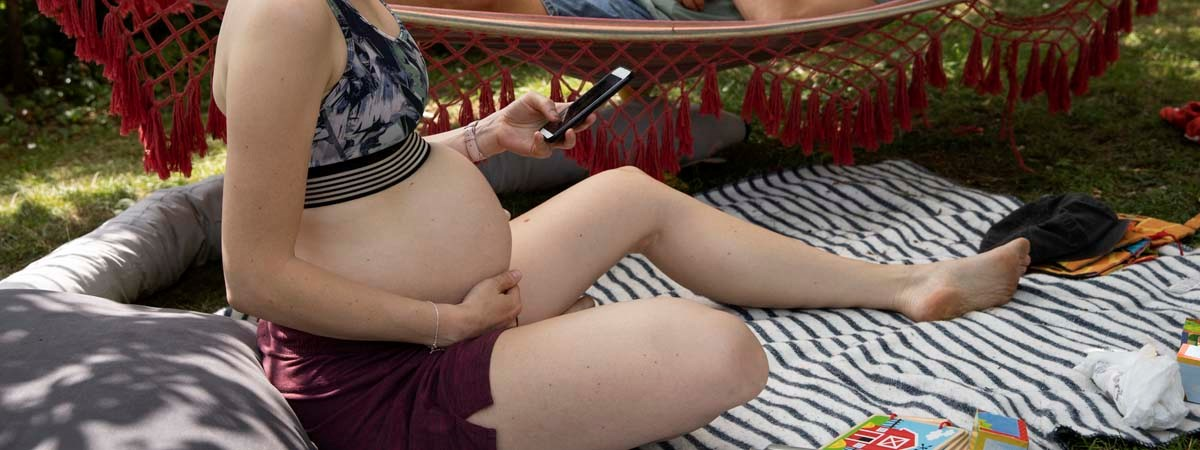Preparing for labour

To be sure, people have been giving birth throughout the ages and it’s something the body is built to do. But it’s also one of the most demanding tasks to which a body can be subjected. So what’s the best way to prepare for childbirth?
Without a doubt, awaiting something for which you can neither plan nor have fully under control can feel a little scary. But there are actually a number of tips for labour that can improve the chances of it going well. For example, it’s good to have an understanding of pain, how it works, and how to prepare yourself to handle contractions. The mother’s other health conditions and how long or complicated labour is also impact how painful the birthing process is, and what contractions feel like. This also depends on the support you have and how you think about the process.
Relaxation and breathing exercises
Tensing your body is a natural reaction to pain, but during childbirth it can be really counterproductive. With the right breathing and relaxation techniques, you can prevent the body from becoming tense, which actually effectively serves as pain relief. Try it yourself the next time you get a shot, stub your toe or hit your funny bone. The body instinctively wants to tense up, and often we hold our breath and then start hyperventilating. But instead, if you breathe smoothly in and out through your nose, it will be easier to manage the pain. Deep breathing, where you fill your lungs all the way up, also provides your body with more oxygen, which helps boost your energy level and stamina – both before and after childbirth.
But the ability to breathe properly and relax is often something we have to practice. Especially when you plan to harness those new skills in a situation as intense as childbirth. Even if it’s always better to start practicing early on in your pregnancy – the more practice, the easier it is to leverage those skills when it counts – it’s never too late to get started. It is also good to practice with the person who will be joining you in the delivery room, because it can be easy to lose your focus when the pain is at its peak. If you have practiced breathing with someone, their support can be invaluable when you’re giving birth and lose yourself in a contraction. If you need a little more support, ask the midwife how to breathe deeply and with concentration.
Learning to manage contractions
Yes: giving birth is painful. Very painful, even. But it’s difficult to compare the pain of contractions to anything else. What differentiates this from other pain is that contractions do not signal that something is wrong in the body. That means that it can feel as though the pain provides you with enormous power that brings the baby closer each time. Something nice to recall when the pain is at its most intense is that this part passes faster than you can imagine, and then you have a new little life in your arms.
It’s also easier to handle the pain of childbirth if you:
- try to take breaks and practice relaxing in between contractions
- try to focus on one contraction at a time, rather than seeing the entire labour process ahead of you
- envisage the goal of getting to hold your baby in your arms
- listen to and trust your body: it knows what to do
- take deep, intentional breaths
- be aware that the body produces its own pain-relieving substance (endorphins) to help when the pain gets too strong – and this lingers for a while after labour
- have active support from a partner, doula, or someone else to whom you are close, because studies show that this actually reduces pain from contractions
- receive massage during labour, which provides pain relief and a sense of closeness that can shift your focus away from the contractions (and as an added bonus, being close to your partner helps the body produce oxytocin, which is the body’s contraction-stimulating hormone)
- let go of all expectations about how labour will go and accept what is happening here and now
- do not let pride keep you from getting pain relief – if you need it, take it
- read up on different kinds of pain relief in advance and on what is happening in the body during childbirth.
There are different ways to prepare for childbirth and loads of different classes you can take. We know it isn’t always easy to sort through them, so we’ve gathered the most common classes and will tell you a little about them here. Your midwife also has tons of knowledge and can give you tips for exercises to do at home and good classes to take.
Parenting and childbirth classes
Depending on where you live, maternity care might include prenatal classes for first-time parents-to-be. Just what the class covers might vary, because it’s often determined by what the participants request. But in general, these classes tend to focus more on childbirth, the first period at home and the role of the partner versus how to approach an allowance for kids. The idea is for the class to boost your confidence and security in the run-up to delivery and parenthood, and to give you a sense of what awaits you as a future parent. Often, you will attend with other future parents who will give birth around the same time as you, which makes it a natural forum for talking to people in a similar situation about what you’re thinking and wondering. Hospitals sometimes offer informational meetings that can be popular, where midwives talk about childbirth, what usually happens, and what to think about before you go.
If you are experiencing an intense fear of childbirth or if you’ve had negative experiences during childbirth in the past, maternity care can help you contact a special clinic to work with that fear. A little worry is completely normal, and something most people experience. But it’s important to not let it overwhelm your thoughts – instead, get help!
Write a birth plan
It is good to prepare for childbirth by reading up on different kinds of pain relief and considering what you want. One step in this process is to write a birth plan that includes things you consider important. This includes things you want the hospital staff to know, anything you do not want, or anything you are anxious about or afraid of. It isn’t always easy to explain these things when you’re in the middle of a contraction and your body has a lot to focus on. That means it’s also a good idea for the person joining you in the delivery room to have read the plan, too, so that they can speak on your behalf when you’re busy handling a contraction.
Skip the lengthy novel format; instead, make a list of bullet points that are easy for staff to read – sometimes things can happen quickly, and they’ll need to be able to be quick. If you don’t know where to start, we have a checklist in our app with tips for things that may be good to include in your plan.
Rest up and eat well
You’ve surely heard it before: giving birth takes at least as much energy as running a marathon. And not many people would run a marathon without fuelling up with the right foods and plenty of rest. For example, it might be good to try to eat more slow carbs, which support endurance. So a few weeks before your expected delivery date, focus more on beans, porridge and whole grains, and less on pasta and white bread. Of course, you also need to simply lie on the couch and eat chocolate sometimes, if that makes you feel better and relaxed.
Water aerobics, prenatal yoga and massage
But relaxing on the sofa doesn’t necessarily have to clash with staying in shape, which can make the process go faster, and with fewer complications. So it’s not a bad idea to occasionally put down the chocolate and get moving. We aren’t talking about a triathlon every week; instead, get exercise in a form that suits your pregnant body and meets you where you are.
One good way to stay in shape as your belly gets heavier is with water aerobics. You can move around freely in the water without burdening your back or pelvis. Even if you’re struggling to move around because of back pain or a lot of fluid in your body, you can give it a try – if nothing else, it will give you a break from a heavy and possibly clumsy pregnant body.
Prenatal yoga is also gentle on the body. Breathing plays a big role there too, which can be useful during childbirth. Plus, it improves mobility and softens the body, which can aid the process of giving birth. A lot of yoga postures for pregnant people can actually be used as birthing positions, too. As with all exercise and movement, it is important to listen to your body and not push to do something that doesn’t feel good. If that means lying down on your mat and staring at the ceiling for an hour, that is completely fine; it’s a chance to relax and turn your gaze inward for a moment.
The further along in your pregnancy you are, the more tired and achy your body will be. Massage has a pain-relieving effect, thanks to the oxytocin it releases. The gentle movements of massage kick-start blood circulation, which softens much of the tension that tends to occur as your belly becomes heavier. If you want to go to a massage therapist, check first that they have a special massage table that you can lie on comfortably with your belly.
But you don’t necessarily have to go to a massage therapist – it’s also good to practice with the person who will be with you in the delivery room, where massage can be nice when it’s time. Classes are often available; your midwife might have tips. A class may help your partner feel more involved in the pregnancy, because it’s a concrete way to truly support you, during both pregnancy and childbirth. If you take a Lamaze class, simple massage might be included; you can look that up.
Trying to move at a pace your body can handle is actually beneficial all the way to the end of pregnancy (as long as you don’t have any complications requiring you to remain still, of course). But other kinds of physical exertion that tire out the body, like cleaning and lugging around heavy grocery bags, actually can wait – at least for the person who will be giving birth.
What is a Lamaze class?
A Lamaze class teaches you how to manage the pain of contractions during labour. Often, it can lead to a more positive childbirth experience. The importance of breathing is a major part of Lamaze classes, but they also cover techniques for preparing mentally and learning to relax in order to reduce stress. The role of the partner or friend is also important and you will go through how to coach and provide support. Taking a Lamaze class can also help alleviate fear of childbirth, because you often learn more about what childbirth involves, which can give you a better understanding of what it’s like to give birth.
Most classes are pricey and are held privately by midwives trained in Lamaze. It’s common to start the class when one or two months remain until your expected due date. If you aren’t keen to do breathing and relaxation exercises as part of a group, online and private classes are also available.
Please note that all information above is based on Swedish recommendations.

